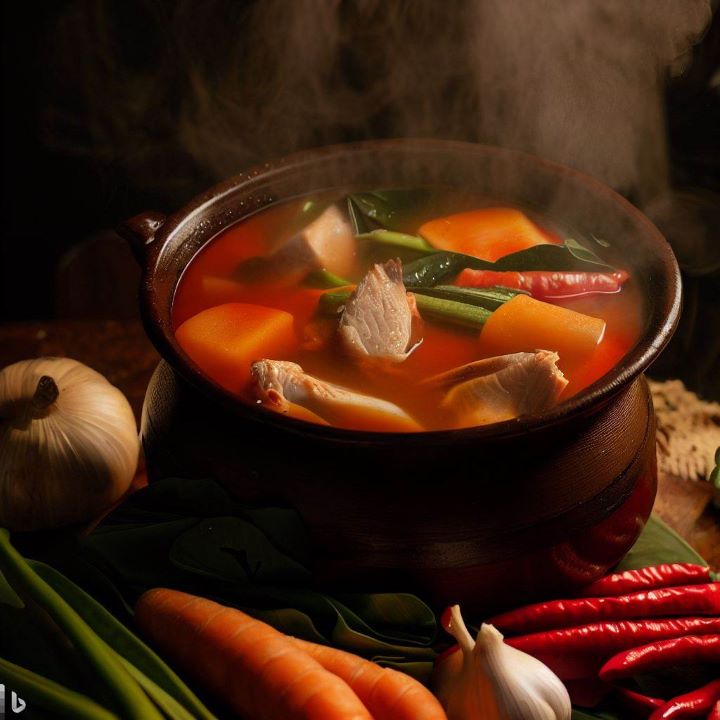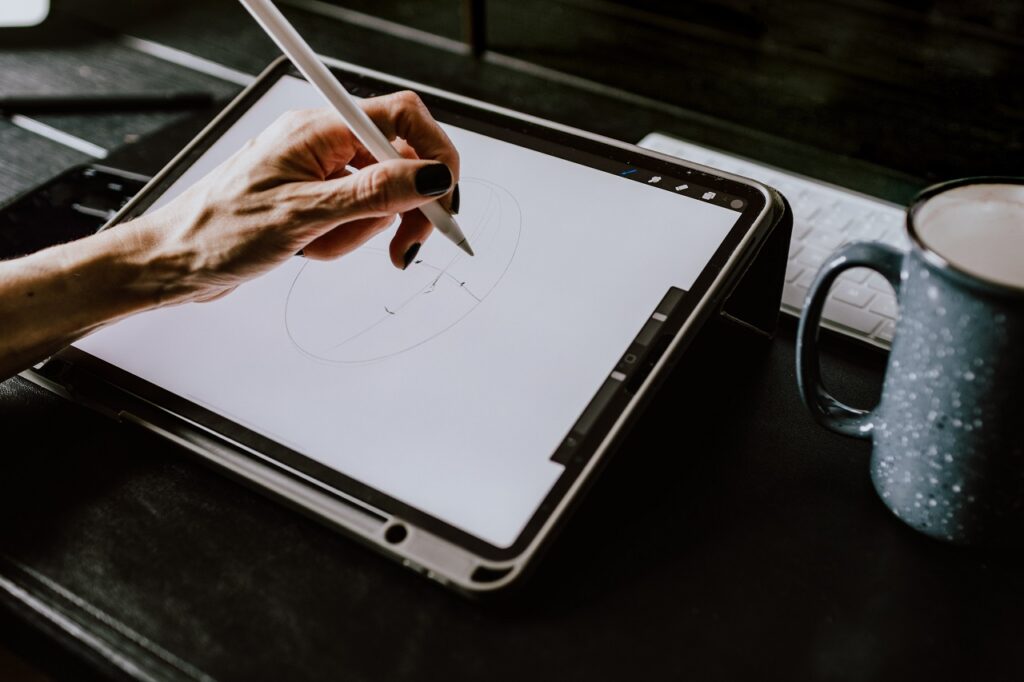Art has always been a means of expression for people, a means of capturing and sharing with others the essence of our environment. Art has always been a crucial component of human culture, motivating and prodding us to think and feel in novel ways. This is true of everything from prehistoric cave paintings to contemporary masterpieces. What transpires, though, when machines start producing art? Will their work be lifeless and sterile, or will it be able to capture the essence of our world in the same way that humans do?
It’s called Artificial Intelligence (AI), and it’s changing the way we make and enjoy art! Now machines are making art too, creating everything from paintings to music. It’s wild, right? But what do you think this means for traditional art forms? Will AI take over, or will it complement the work of human artists?
The rise of AI-powered art is an intriguing development that challenges our notions of creativity and artistic expression. While machines have historically been used to aid artists in areas such as creating digital art and animation, AI-generated art differs in that it is created entirely by machines with little or no human intervention. This means that machines not only imitate human creativity but develop their own form of creativity which differs from human creativity.
So, how is AI changing the art world, and what impact will it have on traditional forms of art? As we explore the emergence of AI-generated art, we’ll delve into the different AI platforms used for image generation, their potential pros and cons, and the ethical and societal concerns raised by their use. Join me on this exciting journey into the world of AI-generated art, and let’s discover together the possibilities and challenges of this new form of creative expression.
The Emergence of AI Art
Art and technology have always been two peas in a pod, but with the emergence of Artificial Intelligence (AI), their relationship has reached new heights. Believe it or not, AI-generated art is no longer science fiction; it’s a living, breathing reality that’s taking the art world by storm.
It all started in the early 1960s when computer scientist A. Michael Noll used a computer to generate patterns and images, marking the beginning of a new era in art. This groundbreaking development paved the way for artists and scientists to experiment with machines in creating and manipulating images.
Fast forward to today, and the world of AI-generated art has seen some impressive advancements. Thanks to deep learning algorithms like Generative Adversarial Networks (GANs), artists can create increasingly realistic and intricate images. The magic of GANs lies in their two-part system, with one algorithm generating images and the other evaluating them for realism, allowing the AI to learn and evolve with each iteration. The possibilities are endless with GANs and other deep learning techniques, and the field continues to evolve at an astonishing pace.
The world of AI-generated art is buzzing with creative minds who are redefining traditional art methods. Meet Mario Klingemann, a German artist who unleashes the power of neural networks to create captivating installations, videos, and prints. His works dive into the intricate relationship between humans and machines, blending reality and imagination in ways you’ve never seen before.
And then there’s Sougwen Chung, a Chinese-Canadian artist who is revolutionizing the world of AI-generated art. Sougwen’s works combine classic drawing techniques with machine learning algorithms to produce mesmerizing compositions that evolve over time. Her stunning creations have graced the walls of prestigious galleries and museums around the globe, and she’s even collaborated with musicians and dancers to craft mind-bending audiovisual experiences.
AI-generated art is a thrilling new frontier that challenges our perceptions of what art can be. It also begs the question of how technology can shape creative expression and the relationship between man and machine. As we continue to explore this mesmerizing realm, we can expect to witness more astonishing works that will awe and inspire us.
The Creative Process
Now that we’ve seen how AI-generated art has emerged as a significant force in the art world, let’s dive deeper into the creative process behind it.
One impressive example is DALL-E, an AI system developed by OpenAI. DALL-E can generate images from textual descriptions. Another example is Jasper Art, which is an AI tool that can create art by analyzing different styles and patterns.

So, how do these systems work? Well, both DALL-E and Jasper Art start with a vast database of images, which the AI uses to learn and identify different patterns and styles. Then, when it’s given a prompt or description, the AI can create a unique image by combining different patterns and styles it’s learned. For example, DALL-E was trained on a dataset of text-image pairs, which allowed it to learn how to generate images from text prompts.
To give you a better idea, let’s say you give DALL-E a prompt like “a red shoe with wings.” The AI will use the patterns and styles it has learned from the database to create an image that matches your description. The result could be a red shoe with wings that looks like it was drawn by a human artist.
But here’s the thing: while the AI is the one generating the image, it still needs human input to guide it. For example, someone needs to give the AI a prompt or description to work with, and someone needs to curate the database of images that the AI learns from. So even though AI can create art on its own, it’s still a collaborative effort between humans and machines.
And that’s where things get interesting. Because humans and machines can work together, artists can use AI to create new forms of art that wouldn’t be possible otherwise. For example, an artist might use an AI tool like Jasper Art to generate a base image that matches their vision, and then add their own unique style and personal touch to it. This type of collaboration between humans and machines can lead to exciting new forms of art that push the boundaries of creativity.
The Impact on Traditional Art Forms
While AI-generated art has been making waves in the art world, it’s also raising some important questions about the impact on traditional art forms such as painting and sculpture.
One potential implication is that AI-generated art could challenge the traditional concept of authorship in art. With machines creating the bulk of the work, who should be credited as the artist? Should it be the person who programmed the algorithm or the machine itself? As AI-generated art becomes more prevalent, we may need to rethink our understanding of what it means to be an artist and how we assign value to creative works.
Another area of concern is the question of ownership. If a machine generates a work of art, who owns the copyright? Is it the person who programmed the algorithm, or the machine’s manufacturer, or the machine itself? These are challenging legal and ethical questions that we’ll need to address as AI-generated art becomes more widespread.
Despite these challenges, some see AI-generated art as an opportunity to push the boundaries of traditional art forms. For example, an artist might use a GAN to generate a starting point for a painting or sculpture, then add their own personal touches to create a unique work of art. This process of collaboration between human and machine could lead to new forms of artistic expression that were previously impossible.
Another potential impact of AI-generated art on traditional art forms is the democratization of art. With AI tools becoming more accessible, more people can create art without the need for specialized training or expensive materials. This could lead to a more diverse range of voices and perspectives in the art world.
AI-generated art is posing some significant questions and challenges to traditional art forms. From questions of authorship and ownership to the potential for collaboration and democratization, the impact of AI on the art world is just beginning to be understood. As we continue to explore this exciting new frontier, it’s essential to consider the ethical implications and the ways in which AI-generated art can complement and enhance traditional forms of artistic expression.
The Future of AI Art
As AI-generated art continues to evolve, the future of this field is full of exciting possibilities. One potential development is the creation of interactive and immersive experiences that allow audiences to engage with AI-generated art in new and exciting ways.
Imagine, for example, an AI-generated painting that responds to the movements of the viewer or a sculpture that changes shape in response to sound. These kinds of interactive experiences could open up new avenues for artistic expression and create a more dynamic relationship between art and audience.

However, there are also potential drawbacks to this kind of art. For example, as AI-generated art becomes more common, there’s a risk that it could become formulaic and predictable. If machines are doing most of the creative work, there’s a danger that the resulting art could lack the spontaneity and surprise that makes traditional art so compelling.
Another concern is that AI-generated art could lead to a loss of authenticity and emotional resonance. While machines can certainly create aesthetically pleasing images, can they truly capture the depth and complexity of human emotion? Some argue that the best art comes from the human experience and that AI-generated art will always be lacking in some essential way.
Despite these concerns, the potential benefits of AI-generated art are significant. For artists, AI tools offer new opportunities for experimentation and exploration. They can also help to streamline certain aspects of the creative process, freeing up artists to focus on other aspects of their work.
For audiences, AI-generated art offers new and exciting experiences that challenge our expectations and expand our understanding of what art can be. By breaking down traditional boundaries and exploring new forms of creative expression, AI-generated art is shaping the future of the art world in exciting and unexpected ways.
Wrap-up
Throughout this article, we’ve delved into the fascinating world of AI-generated art and examined its impact on traditional forms of art. We’ve seen how AI technology is changing the way artists create, and how audiences experience and interact with art.
From its earliest experiments to current developments, we’ve discussed how AI-generated art has come a long way. The field is now home to a range of innovative artists and works, including the incredible digital portraits of Mario Klingemann and the mesmerizing performances of Sougwen Chung.
We’ve also explored the creative process of AI-generated art, from the use of machine learning algorithms to generative adversarial networks (GANs). We’ve seen how humans can collaborate with AI to create entirely new forms of art, allowing for endless possibilities and opportunities for creative expression.
As AI-generated art becomes increasingly prevalent, it raises important ethical questions about the value of human creativity and ownership of artistic works. Some may question the role of AI in the creative process, fearing that it may replace human artists entirely. However, I believe that collaboration between humans and machines can result in truly innovative and exciting art. It is important to use AI responsibly, and limiting its power is a good idea to ensure that it serves as a tool for human expression rather than a replacement. Ultimately, it is up to us to ensure that AI is used for the benefit of society and to prevent its potential misuse.
